#food justice
Text
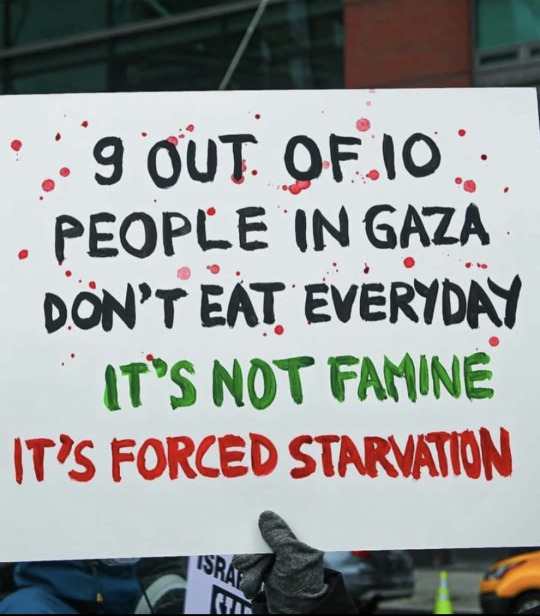
#palestine#free palestine#gaza#free gaza#israel#from the river to the sea palestine will be free#current events#free free palestine#gaza strip#jerusalem#famine#food justice
11K notes
·
View notes
Text
We all deserve:
consistent access to enough food
food that meets our nutritional needs
food that doesn't cause pain/discomfort/harm to the individual eating it (allergies, medical restrictions, etc)
food that meets our religious/cultural needs
food that doesn't cause undue burden to prepare (esp not so much burden that it regularly keeps us from eating or damages our health)
food that no one was harmed or coerced to make or grow
a variety of foods
that we enjoy eating
How many of these points are attainable for the average person under capitalism? How many for poor people? For poor disabled people? For poor people who come home from low paying jobs completely exhausted and unable to consistently do more than a few minutes of food prep, or any at all? For prisoners or those living in medical institutions?
503 notes
·
View notes
Text

#acab#anarchism#gardening#community gardens#defund the fucking police#1312#crop rotation#abolition#food justice
315 notes
·
View notes
Text

On our way to a plant-based future, let's make sure we don't repeat the mistakes of the past.
#plant based#vegan#veganism#capitalism#late stage capitalism#fuck capitalism#sustainability#sustainable#environment#environmentalism#climate change#global warming#bipoc#queerbrownvegan#writing#blog#justice#food justice#food
246 notes
·
View notes
Text

Thanks for joining Urban Soul Farmer. It’s been a pleasure !!
-Zoe
#urbansoulfarmer#zoeblaq#urban gardening in los angeles#growfood#workshop#containergardening#herbs#desert ranch#restoration#food justice#food sovereignty
26 notes
·
View notes
Text
In honor of earthworms on this “international earthworm day”, we give you 455 red wiggler worms.
Sound On!!!
#vermicomposting#earthworm day#compost#soil#permaculture#biodynamic#food systems#atlanta urban ag#urban ag#food access#soil food web#biodiversity#soil creation#worms#organic#polyculture#soil health#food justice#food security#food sovereignty#maurice small
153 notes
·
View notes
Text
I'm curious as to how well known these services are outside of ag communities.
The food distribution thing may or may not be less well-known because it is typically done through a government service or non-profit, but not always! And it is a service lots of small farm owners are doing.
#had to remake cause i always accidentally let the poll only be for a day. augh.#agroecology#sustainable agriculture#food justice
9 notes
·
View notes
Text
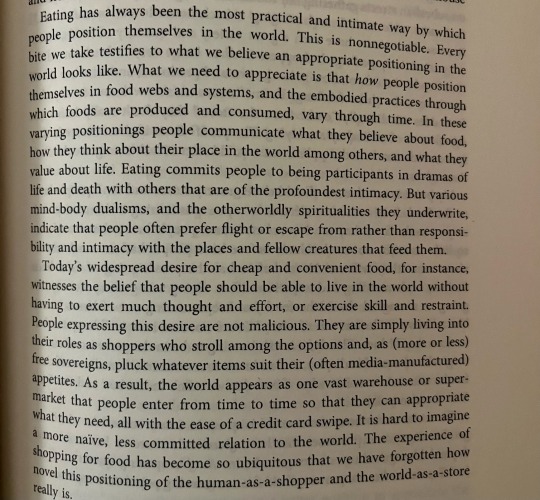
Food and Faith, A Theology of Eating (2nd edition) by Norman Wirzba page 15
10 notes
·
View notes
Text
today's Fifth Acre work: sheet mulching!
I have decided to sheet mulch as well as sieve the stones and broken glass, rusty nails, and general trash from the top soil before I start compost application and soil amendment. The rest of the weeds (filaree, ugh) can be pulled with about six hours of work, and then I'll have two plots. Terrace West will be a three sisters based garden with some others like chard, kale, eggplant, tomatoes, and peppers. Terrace Center will have sunflowers, cucumbers, cantaloupe, and nightshades. Terrace East is already planted with potatoes and alliums, and Terrace Top has some potatoes, thornless blackberries, and a raspberry that decided it ain'tn't dead yet.


Image description: two images, both of a garden sheet mulched with cardboard on an overcast day. The left shows a long view of an 800 sqft area sheet mulched, and clover and filaree in foreground unmulched. Right shows two raised beds, overrun with filaree, with sheet mulching around the left side and trampled filaree on the right.
I found some volunteers while working: a pansy by the compost over in Terrace East, and some Eschscholzia poppies at the edge of Terrace West and the shrine garden.


Image description: two closeup photos of flowers. Left is a pansy about the size of a quarter growing out of a small leaf cluster among many other green plants in rocky soil. It has two purple upper petals, two small white side petals, and a yellow beard petal with black striping. Right is a California poppy bud and unopened blossom, growing amongst its own dense foliage and clover leaves.
Tomorrow I stop in at a queer / trans asian gardeners collective to see if I'm a good fit for joining. Wish me luck!
#thefifthacre#garden#gardening#gardenblr#garden witch#witchcraft#green witch#jewish magic#jewitch#before shots#food justice#food sovereignty#zone 9#zone 9b#homegrown#volunteers#pansy#California poppy#poppy#golden poppy#eschscholzia californica#native plants#native flowers#plant native#sheet mulching
24 notes
·
View notes
Text
Miami, Florida. The 'Food Forests for Schools' program is a ground breaking initiative that to date has installed edible forest gardens in 28 elementary (primary) schools across the Miami-Dade county schools board district. This includes the USA's first food forest in a school at Twin Lakes Elementary.
In the gardens the children learn about nutrition, medicinal plants and culturally important foods. They take home produce to their parents and grandparents, and the gardens supplement school lunch meals.
Maths and science is also taught in the outdoor classroom spaces integrated into the garden. The lesson plans have been approved by the district schools board. The participating schools have recorded significant improvements in students' performance in math and science after switching to learning in the gardens.
Thanks so much to The Education Fund - Miami for hosting me this week.


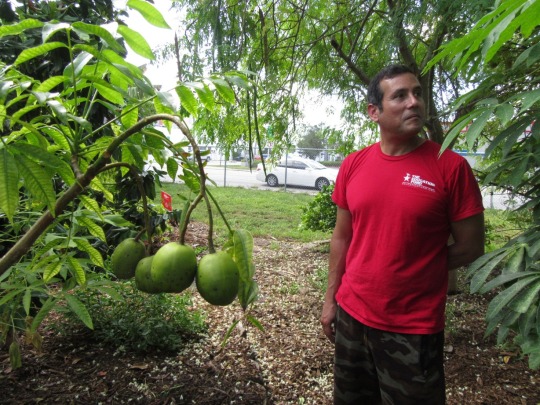


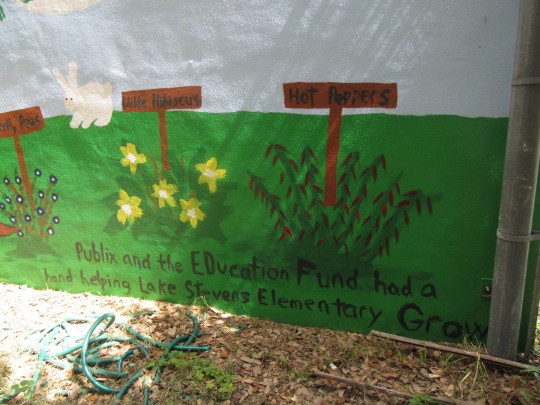

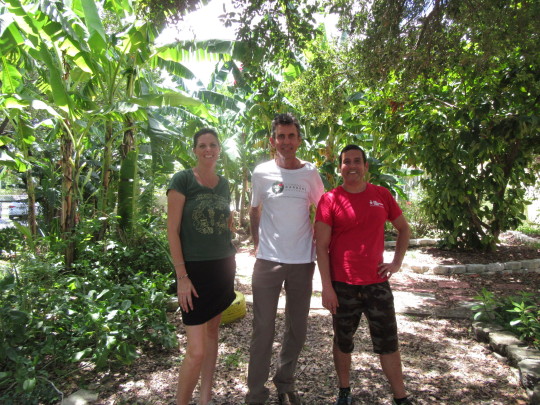
98 notes
·
View notes
Text
heeey im not a human geography expert, and ive bit my tongue about this before but.....endless population growth is actually an existential crisis facing the human race. its very tempting to brush off all warning around the earth's carrying capacity as malthusian pseudoscience used to shift the blame for resource scarcity on emerging nations, but the truth is that we are globally failing to feed and house 7 billion people, and not just because of greedy neoliberal politics or wasteful supply chains. its just a Lot of people and a Limited amount of land.
its not impossible, but i just think its important not to downplay the inherent logistical challenges, even in a scenario where enough of the world's decision-makers came together to solve world hunger. and some of the solutions are likely going to involve policies that accommodate population de-growth, at least in wealthy nations.
#not dissimilar from economics in general#degrowth is not evil#it doesnt have to involve eugenics either#But ignore the problem and it will correct itself#in the worst and most violent way imaginable#covid pretty much demonstrated that#climate change#international politics#food justice
9 notes
·
View notes
Text
Israel is starving the children of Gaza
#palestine#free palestine#gaza#from the river to the sea palestine will be free#free gaza#current events#israel#free free palestine#food justice#gaza strip#jerusalem
50 notes
·
View notes
Text
Almost every food you can buy has a history of exploitation and abuse behind it.
Any given piece of chocolate is more likely to have been a product of child abuse than not. Produce farms in the US are frequently a site of abuse so severe it may qualify as slavery. Children are being abused to make Ben & Jerry's ice cream and in meat packing plants. Prisoners, not protected by OSHA or minimum wage, are forced to work in slavery conditions and wages to package and prepare your eggs, dairy, and produce.
Indigenous populations are being displaced and starved out while the land they've sustainably tended for centuries or millennia is taken over by corporations to grow monoculture cash crops that damage biodiversity which accelerates the climate crisis.
And none of this is even touching on the coercion inherent even in food production and distribution jobs that DO follow labor laws under capitalism.
Food justice requires ending capitalism.
Effectively addressing widespread child abuse requires ending capitalism.
40 notes
·
View notes
Text
Watching season 2 of “High on the Hog” and Black folks are just amazing. Our ingenuity is unmatched!
#high on the hog#season 2#netflix#cuisine#food#food justice#black history#black culture#african american
5 notes
·
View notes
Text

On World Food Day, be sure to check out our blog post on food justice 👇!
2 notes
·
View notes
Text



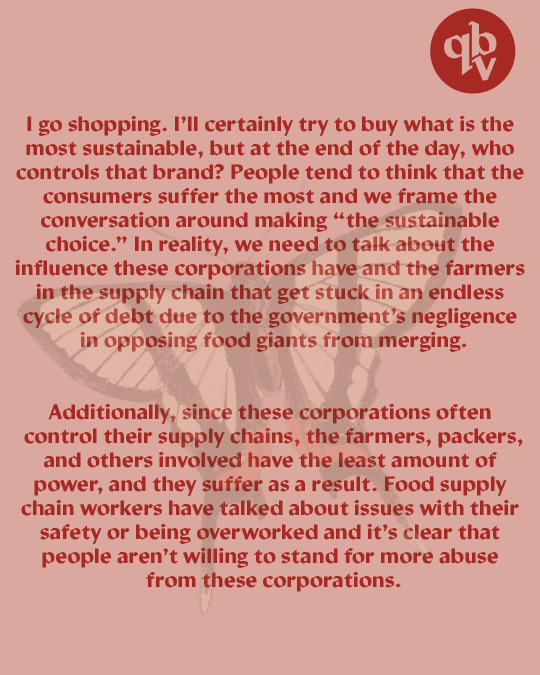

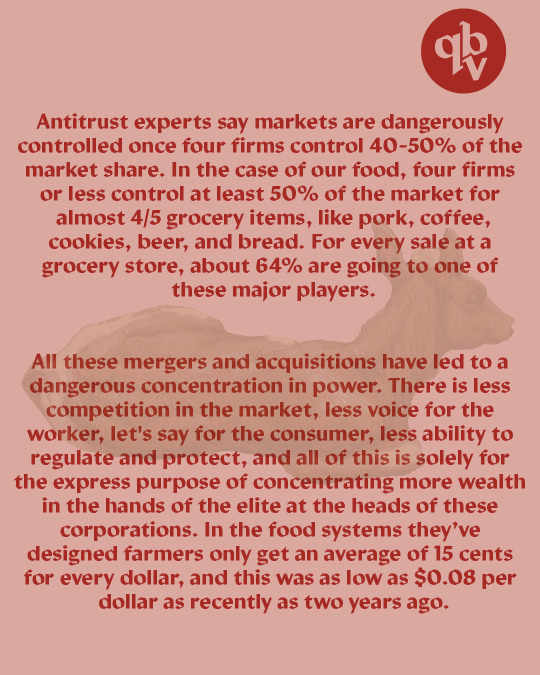
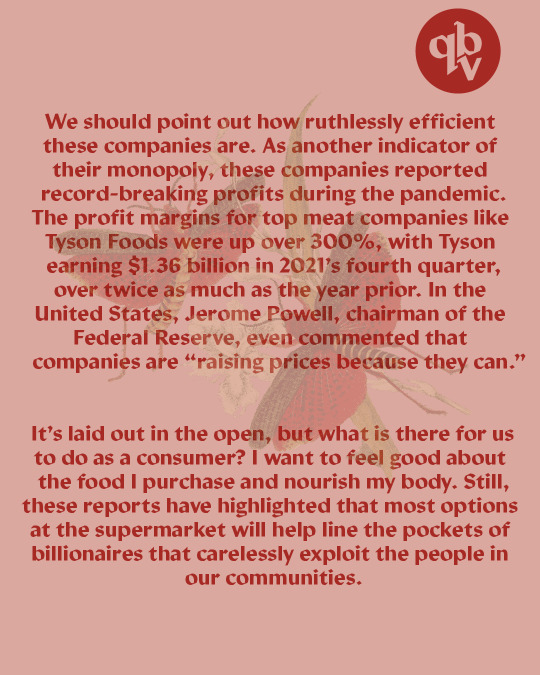
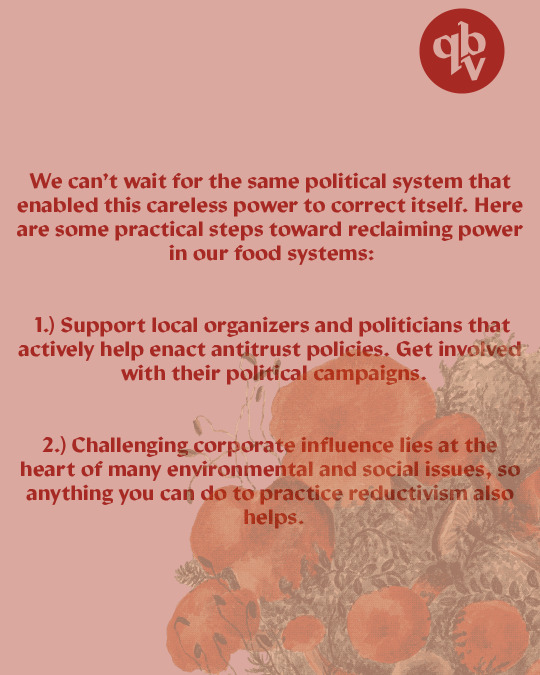
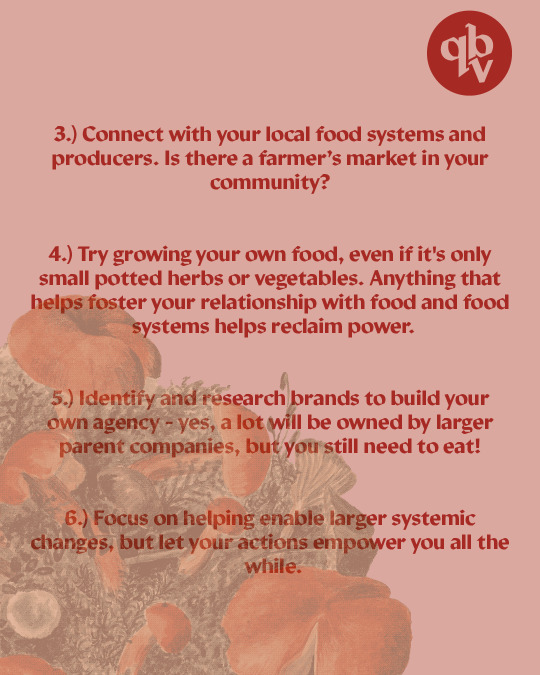

The Illusion of Consumer Choice
You cannot buy your way out of harmful systems, but I still advocate for reductivism. Explore how you can shift out of exploitative systems, but do not sacrifice your well-being because that will lower the level of support you can give to your community. Do not try to solve global problems at your local grocery store if it will put you into financial or personal disarray. Our problems are far bigger than simply what we buy at the grocery store and as such we must set our sights on the beliefs and economic systems that perpetuate injustices.
#food#diet#vegan#vegetarian#veganism#queerbrownvegan#writing#blog#climate change#global warming#sustainability#ecofriendly#environmental#sustainable#capitalism#late stage capitalism#fuck capitalism#justice#food justice#social justice#environmental justice
21 notes
·
View notes